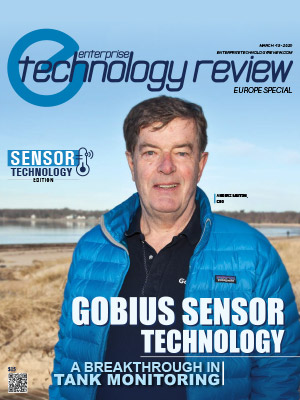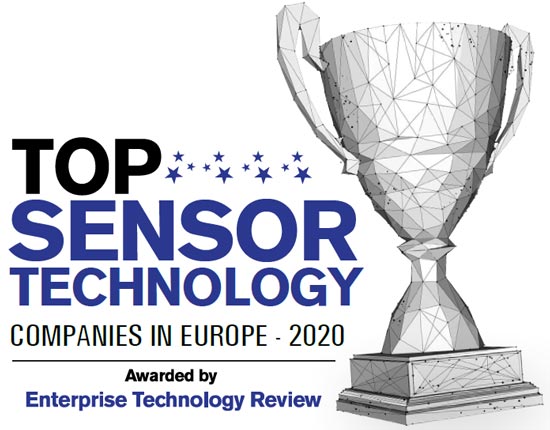 Michael Silveri, Founder and CEO,Halogen Systems, Inc
Michael Silveri, Founder and CEO,Halogen Systems, IncThe following are sequentially measured all on one sensor:
• Chlorine (am perometrically) up to 15 ppm
• pH using unique, rapidly wetting pH sensor cartridge
• Conductivity/Salinity
• Temperature
• Oxidation Reduction Potential (ORP) using a Rapid Response™ method.
Direct pipe or process installation
Halogen’s sensor is the only amperometric chlorine sensor that is not affected by changes in flow velocity from 0 to 3 meters per second. This allows it to be installed directly in a pipe, tank, or process. As a result, it does not require a waste stream as with other sensors. The sensor’s fast response delivers measurements in as little as 30 seconds.
Self-Cleaning
Unlike other sensors, Halogen’s sensor is self-cleaning, resists biofouling, and does not require frequent calibration. Electrochemical cleaning is also used to remove organics.
Low Maintenance
Since reagents or membranes are not used, the sensor has low maintenance requirements.
Robust pH sensor with dry storage
Most pH sensors must be stored wet and are permanently damaged if allowed to dry out for more than a few hours. Halogen’s pH sensor can be stored dry and will survive either high pressure (>150 bar) or vacuum (-0.7 bar) and has a long calibration interval. No other pH sensor cartridge has these specifications.
Patented
Halogen’s novel sensor platform is covered by more than 12 patents worldwide with other patents pending.
Ballast Water Treatment and Seawater Chlorination
Halogen’s first product is used in Ballast Water Management Systems (BWMS) that prevent the transfer of invasive species (like Zebra mussels). This sensor uses an innovative algorithm for use in seawater, brackish water and even drinking water without requiring a change in calibration. Across the world ships take in ballast water and pick up invasive species that, when later released, have the potential to wreak havoc on ecosystems and industries, cost billions of dollars, and cause unquantifiable environmental damage. To reduce the spread of invasive species and to meet international standards, vessels implement a range of treatment systems, including many that use chlorine as a disinfectant. Ships also require desalination systems which use chlorine and face biofouling challenges.
Chlorine in water-treatment systems must be accurately measured to ensure sufficient disinfection and neutralization before the treated ballast water is released back into the sea.
The sensor responsible for the measurement also needs to measure salinity, withstand difficult environmental conditions, and preferably require little maintenance. The Navy’s Small Business Innovative Research programs ought a sensor capable of producing real-time chlorine-detection data to be used in feedback control for ships’ chlorine generators used in the cleaning of reverse osmosisultrafiltration membranes in desalination systems. Halogen’s sensor platform was selected for a series of contracts from the Office of Naval Research (ONR) that allowed Halogen to iterate and improve the design and its robustness. This led to the development of the sensor for BWMS.
Seawater Is arguably the most difficult application for most sensors. It represents the most challenging conditions for a sensor, especially am perometric sensors. High water hardness and high total alkalinity, coupled with high pH and temperature, create ideal conditions for depositing scale on the electrodes or fouling membranes. Halogen’s self-cleaning system continuously removes these deposits and keeps the electrodes clean.
Another challenging aspect of the BWMS application is biofouling. These systems commonly operate only every few weeks. This intermittent use allows marine organisms to grow in the ideal conditions of stagnant seawater in ballast lines. The sensor’s self-cleaning feature removes these organisms and keeps all internal surfaces free of biofilms.
The United States Coast Guard (USCG) requires systems to operate from fully marine seawater to freshwater without recalibration. Once Halogen satisfied this requirement, it opened the door to a host of other applications like drinking water and swimming pools.
In recent years over 2,000 sensors were delivered for use in BWMS applications, including an Explosion Proof version for installation on tankers, providing needed experience to refine and improve the design.
Drinking Water Distribution Systems
Municipalities carefully control their chlorination of potable water systems. They often do not know with accuracy what chlorine levels are at the end user or downstream in the distribution system.
Since the sensor measures five parameters, it can replace multiple discrete sensors at a fraction of the cost. SCADA or Programmable Logic Controllers (PLC) can communicate directly with the sensor without requiring a separate transmitter, lowering the cost of both installation and initial purchase. A new design adds pressure measurement to the parameters. The fact that the sensor does not require a waste stream, is low cost, and low maintenance, makes it an ideal choice for municipal monitoring of drinking water in distribution systems.
Cooling towers
Legionnaires disease has been responsible for numerous deaths in recent years. The primary source of these deaths is often traced to cooling towers. The elevated water temperature and aerosolization of water droplets that contain the bacteria are inhaled and infect vulnerable populations. 24-hour control of cooling tower disinfection residuals are increasingly required in jurisdictions like New York and Pennsylvania. Halogen’s sensor is a potential candidate for use in these control systems to accurately report chlorine levels. The sensor resists fouling due to hard water and can operate at high temperatures.
Domestic Hot Water
The sensor is uniquely suited for measuring chlorine in hot water ~70°C. Minimum levels of chlorine are required in many commercial hot water systems to prevent the growth of Legionella. Chlorine is often added to these systems to ensure the bacteria is controlled.
In Conclusion
Halogen’s experience in developing and perfecting a sensor for a most challenging application has led to continued platform improvement and the benefit of increasing knowledge that extends to a wide range of applications. Halogen is now poised to enter other markets with reliable systems, leveraging its development for lower cost to the end user.
Michael Silveri is the founder and CEO of Halogen Systems, Inc. based in Incline Village, NV. He has over 20 patents in the water treatment field. He has worked over 30 years in water treatment and founded several companies.
Seawater Is arguably the most difficult application for most sensors. It represents the most challenging conditions for a sensor, especially am perometric sensors. High water hardness and high total alkalinity, coupled with high pH and temperature, create ideal conditions for depositing scale on the electrodes or fouling membranes. Halogen’s self-cleaning system continuously removes these deposits and keeps the electrodes clean.
-
Halogen’s Multiparameter Sensor is built on a flexible platform technology that can address a wide range of industries with minimal modifications
Another challenging aspect of the BWMS application is biofouling. These systems commonly operate only every few weeks. This intermittent use allows marine organisms to grow in the ideal conditions of stagnant seawater in ballast lines. The sensor’s self-cleaning feature removes these organisms and keeps all internal surfaces free of biofilms.
The United States Coast Guard (USCG) requires systems to operate from fully marine seawater to freshwater without recalibration. Once Halogen satisfied this requirement, it opened the door to a host of other applications like drinking water and swimming pools.
In recent years over 2,000 sensors were delivered for use in BWMS applications, including an Explosion Proof version for installation on tankers, providing needed experience to refine and improve the design.
Drinking Water Distribution Systems
Municipalities carefully control their chlorination of potable water systems. They often do not know with accuracy what chlorine levels are at the end user or downstream in the distribution system.
Since the sensor measures five parameters, it can replace multiple discrete sensors at a fraction of the cost. SCADA or Programmable Logic Controllers (PLC) can communicate directly with the sensor without requiring a separate transmitter, lowering the cost of both installation and initial purchase. A new design adds pressure measurement to the parameters. The fact that the sensor does not require a waste stream, is low cost, and low maintenance, makes it an ideal choice for municipal monitoring of drinking water in distribution systems.
Cooling towers
Legionnaires disease has been responsible for numerous deaths in recent years. The primary source of these deaths is often traced to cooling towers. The elevated water temperature and aerosolization of water droplets that contain the bacteria are inhaled and infect vulnerable populations. 24-hour control of cooling tower disinfection residuals are increasingly required in jurisdictions like New York and Pennsylvania. Halogen’s sensor is a potential candidate for use in these control systems to accurately report chlorine levels. The sensor resists fouling due to hard water and can operate at high temperatures.
Domestic Hot Water
The sensor is uniquely suited for measuring chlorine in hot water ~70°C. Minimum levels of chlorine are required in many commercial hot water systems to prevent the growth of Legionella. Chlorine is often added to these systems to ensure the bacteria is controlled.
In Conclusion
Halogen’s experience in developing and perfecting a sensor for a most challenging application has led to continued platform improvement and the benefit of increasing knowledge that extends to a wide range of applications. Halogen is now poised to enter other markets with reliable systems, leveraging its development for lower cost to the end user.
Michael Silveri is the founder and CEO of Halogen Systems, Inc. based in Incline Village, NV. He has over 20 patents in the water treatment field. He has worked over 30 years in water treatment and founded several companies.
|
Share this Article:
Tweet
|
Top









